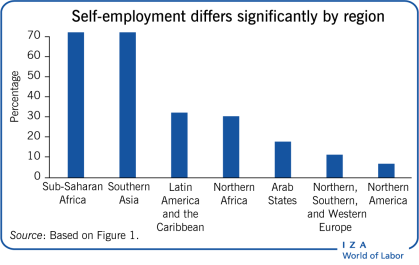Elevator pitch
A key way for the world’s poor to escape poverty is to earn more for their labor. Most of the world’s poor people are self-employed, but because there are few opportunities in most developing countries for them to earn enough to escape poverty, they are working hard but working poor. Two key policy planks in the fight against poverty should be: raising the returns to self-employment and creating more opportunities to move from self-employment into higher paying wage employment.

Key findings
Pros
Most workers in low- and middle-income countries are self-employed, but earnings are typically higher and social protection programs are more widespread in wage employment.
Most workers are self-employed because they have no choice.
One goal for public policy would be to raise the returns to labor of the self-employed.
Another goal would be to move the self-employed into wage employment.
Improving the earning opportunities, creating off-farm employment, training people for wage employment, and making microcredit affordable are among the most promising policy interventions.
Cons
Absolute poverty is not primarily a problem of unemployment, but a problem of low labor market earnings among the employed.
Not enough is known about how many of the self-employed previously worked in wage employment, or why they left.
Self-employment is not the same as entrepreneurship, nor is self-employment necessarily informal.
Although some regulation is necessary and appropriate, the self-employed are often hindered excessively, which unfairly limits their earning power and may deprive them of their means of earning a livelihood.